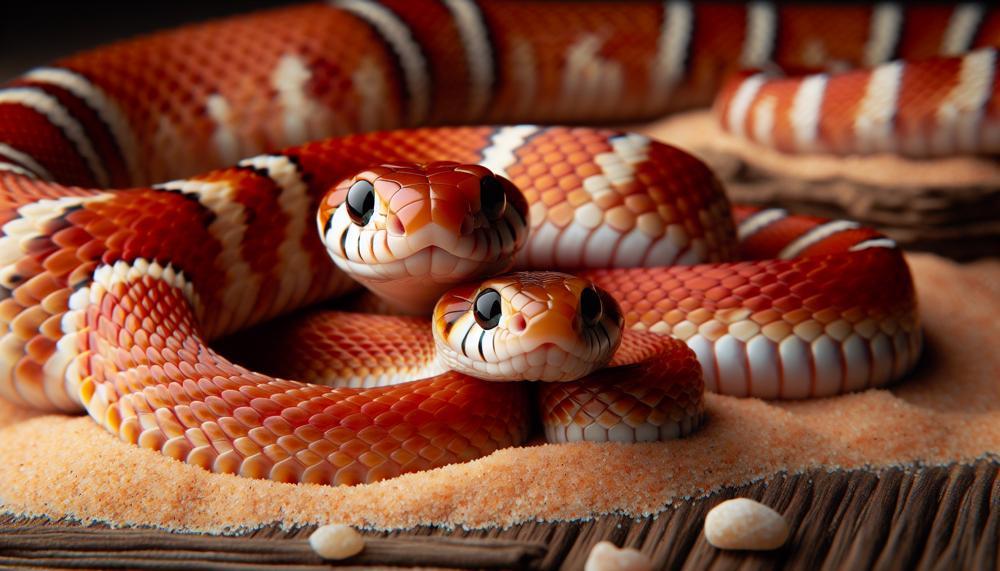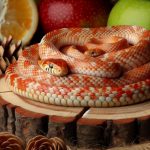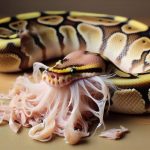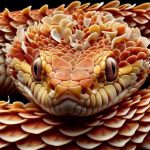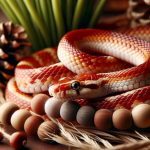Corn snakes, also known as red rat snakes, are a beloved choice among reptile enthusiasts.
Their gentle demeanor and striking appearance make them a popular pet. These non-venomous creatures can be found in a variety of habitats, from forests to grasslands.
However, one intriguing aspect about corn snakes is their affinity for sand as a substrate in captivity. In this blog post, we will delve into the reasons behind this behavior and discuss the benefits of using sand as a substrate for your corn snake.
So, do corn snakes like sand?
No, corn snakes should not use sand alone. Sand is too abrasive and can irritate a snake’s skin. It can also enter a snake’s digestive and respiratory systems and cause health issues.
Let’s dive in.
Contents
- 1 Do Corn Snakes Like Sand?
- 2 Understanding the Natural Habitat of Corn Snakes
- 3 Why Sand is Not Ideal for Corn Snakes
- 4 Harmful Effects of Sand on Corn Snakes’ Health
- 5 Safe and Recommended Substrates for Corn Snakes
- 6 Setting Up a Proper Vivarium for Your Corn Snake
- 7 Essential Items to Include in a Corn Snake’s Enclosure
- 8 Conclusion
Do Corn Snakes Like Sand?
Contrary to popular belief, corn snakes do not do well with sand as a substrate. While it may seem like a suitable option for reptiles, sand can actually cause serious health issues for corn snakes. Due to its inability to hold burrows, which is an essential behavior for these snakes, sand can lead to discomfort and possible blockages if ingested.
Additionally, the lack of absorbency in sand can increase the risk of bacteria and fungal growth, which can be harmful to corn snakes.
Apart from health concerns, sand can also irritate a corn snake’s skin and eyes, causing abrasions and stress. Despite being marketed as safe for reptiles, even silica sand can be harmful due to its fine texture and dust content.
It is crucial to avoid using substrates like pine and cedar wood shavings, bark or wood chippings, which can cause injuries or emit toxic fumes that can damage a corn snake’s lungs.
Understanding the Natural Habitat of Corn Snakes
To ensure the well-being of your pet corn snake, it is essential to understand its natural habitat. You might think that sand is a suitable substrate for your pet, but it can actually pose health risks for them.
In the wild, corn snakes are usually found on or near sand, but this is not their preferred environment. In captivity, experts recommend using other substrate options such as aspen shavings, cypress mulch, or paper towels for baby corn snakes.
These options provide a more natural and comfortable living environment for your pet.
Apart from substrate options, it is also crucial to consider the temperature and humidity levels in your corn snake’s habitat. These snakes thrive in warm and humid environments, so it is important to maintain these conditions in their enclosure.
Additionally, providing plenty of hiding spots is essential for their mental and physical well-being.
Many novice pet owners tend to overlook the importance of understanding their pet’s natural habitat. However, mimicking their natural environment is crucial for their overall health and happiness.
By providing a suitable living space for your corn snake, you can ensure that they live a long and healthy life.
Why Sand is Not Ideal for Corn Snakes
Sand, although appearing to be a convenient and natural-looking choice for a corn snake’s enclosure, is not the best option for multiple reasons.
It fails to provide the necessary humidity levels for corn snakes, discourages natural burrowing behavior, and can even lead to health problems if not properly maintained.
Impact on Humidity Levels:
In order to maintain proper hydration and successfully shed their skin, corn snakes require humidity levels between 65-75% in their enclosure. However, sand does not contribute to these levels and instead absorbs moisture, making it challenging to maintain the required humidity.
This can result in dehydration and other health concerns for your beloved pet.
Inhibits Natural Burrowing Behavior:
In their natural habitat, corn snakes are known to burrow in the ground for shelter and to regulate their body temperature.
Unfortunately, sand does not allow for this natural behavior as it is too compact and fine. This can cause stress and discomfort for the snake, leading to potential health issues.
Negative Effects on Water:
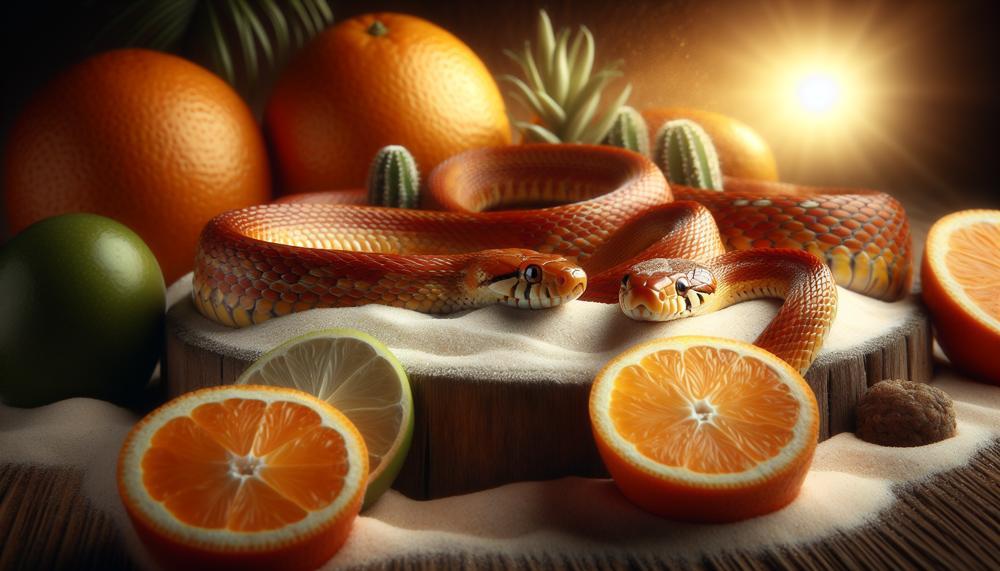
Access to fresh water at all times is crucial for corn snakes, but sand can have negative interactions with water. It has the tendency to become soggy and moldy, creating an unhygienic living environment for your pet.
Furthermore, using water bowls with sand substrate can attract fungus gnats, which can harm your snake.
Additional Maintenance Required:
Although sand may not be outright harmful for corn snakes, it does require extra effort to maintain proper humidity levels. This includes frequent misting, which can be time-consuming and tiresome.
Other substrates such as aspen shavings or cypress mulch are better alternatives as they have a natural ability to hold moisture and require less maintenance.
Harmful Effects of Sand on Corn Snakes’ Health
After extensive research and careful consideration, it has been determined that sand can pose multiple health risks for corn snakes when used as a substrate in their enclosure.
These dangers include respiratory infections, skin irritation and infections, impaction, and dehydration.
It is crucial for pet owners to be aware of these risks and thoughtfully consider their choice of substrate for the well-being of their corn snake. The following table summarizes the potential health risks associated with using sand as a substrate for corn snakes:
| Health Risks | Description |
| Respiratory Infections | Due to the breeding of bacteria and fungi in the sand. |
| Skin Irritation and Infections | Sand can cause damage to the snake’s skin, leading to infections. |
| Impaction | Sand particles can become lodged in the digestive tract, causing blockages and digestive issues. |
| Dehydration | The poor moisture retention of sand can lead to dehydration and shedding problems. |
Furthermore, sand can also significantly affect the humidity levels in the enclosure, making it challenging to maintain the ideal 40-60% humidity range required for corn snakes. Additionally, sand discourages natural burrowing behavior in these snakes, which can lead to stress and other behavioral problems.
Therefore, while sand may appear to be a desirable choice for corn snake substrate, it is essential to be aware of the potential health risks it presents.
Safe and Recommended Substrates for Corn Snakes
Corn snakes, native to the southeastern region of the United States, are found in a variety of habitats like forests, fields, and farmland. To ensure their physical and mental well-being in captivity, it is important to replicate their natural environment by providing a suitable substrate that promotes natural behaviors.
The ideal substrates for corn snakes are those that maintain humidity levels between 65-75%, encourage burrowing behavior, and are easy to clean and maintain. Some recommended substrates for corn snakes include:
- Aspen bedding: This popular substrate is absorbent, promotes burrowing behavior, and is easy to clean. It also helps maintain humidity levels.
- Cypress mulch: Similarly to aspen bedding, cypress mulch is absorbent and encourages burrowing behavior. However, it may not be suitable for quarantine setups as it can lead to fungus gnat issues.
- Coconut husk: This substrate is also absorbent and promotes burrowing behavior. It is also environmentally friendly and helps maintain humidity levels.
- Paper-based bedding: Made from recycled paper, this highly absorbent substrate allows for burrowing behavior and helps maintain humidity levels.
- Reptile carpet: A safe option for corn snakes as it does not pose any risk of ingestion or impaction. However, it does not allow for burrowing behavior and may need frequent cleaning.
While sand may seem like a suitable substrate due to its resemblance to the snake’s natural habitat, it has been found to have potential health risks. The sharp edges of sand can cause skin irritation and infections when the snake comes into contact with it. It can also lead to respiratory issues if accidentally ingested or inhaled.
Furthermore, sand can cause impaction if ingested by the snake during feeding or exploration, resulting in severe gastrointestinal problems or even death. It can also be highly absorbent, leading to dehydration if not regularly monitored and maintained.
Setting Up a Proper Vivarium for Your Corn Snake
When it comes to creating the ideal vivarium for your corn snake, choosing the right substrate is crucial. Not only does it need to mimic their natural habitat, but it should also foster their burrowing behavior and maintain humidity levels between 65-75%. This ensures a comfortable and healthy environment for your beloved pet.
There are several suitable options for corn snake substrates, including aspen bedding, coconut husk, and cypress mulch. These naturalistic substrates are humidity-friendly, providing the necessary moisture for proper shedding and respiratory health. However, it is important to regularly clean the enclosure and replace all substrate every 3-4 months to prevent waste buildup and harmful bacteria.
On the other hand, there are some substrates that should be avoided for corn snakes. Sand, gravel, and pine or cedar shavings can be harmful to your pet. Sand can cause impaction if ingested, while gravel can lead to skin irritation and injury.
Pine and cedar shavings contain oils that are toxic to reptiles. These substrates also do not hold humidity well or allow for natural burrowing behavior.
When selecting a substrate for your corn snake, keep in mind both their needs and the maintenance required. For example, cypress mulch may attract fungus gnats, which can be harmful if ingested. However, it is still considered a safe and naturalistic option.
It is essential to monitor the vivarium regularly and address any substrate issues promptly.
Essential Items to Include in a Corn Snake’s Enclosure
Corn snakes are beloved pets due to their gentle demeanor and low maintenance requirements.
However, it is crucial to provide them with a well-equipped enclosure that caters to their physical and psychological needs. Here are the necessary items that must be included in a corn snake’s enclosure:
- Appropriate Enclosure: Corn snakes can thrive in a glass terrarium or a secure plastic tub with a locking lid. The size of the enclosure should be at least 20 gallons for an adult corn snake.
- Suitable Substrate: Selecting the correct substrate is essential for the health and well-being of a corn snake. It should be visually appealing, easy to clean, and allow for burrowing behavior. Naturalistic options such as aspen bedding and coconut husk are ideal, while substrates like sand and pine shavings should be avoided.
- Temperature and Lighting: Since corn snakes are cold-blooded creatures, maintaining proper temperature and lighting conditions in their enclosure is crucial. A heat source, such as an under-tank heating pad, should be provided to create a warm side (85-90°F) and a cool side (75-80°F) in the enclosure. A UVB light may also be necessary for adequate calcium absorption.
- Multiple Hiding Spots: Corn snakes are reclusive animals and require multiple hiding spots in their enclosure to feel secure. These hideouts can include natural elements such as rocks or logs, or commercially available hides.
- Environmental Enrichment: Promoting natural behaviors is crucial, which is why it is essential to replicate a corn snake’s natural habitat in their enclosure. This can include providing branches for climbing, rocks for basking, and artificial plants for hiding.
- Water Bowl: Just like any other animal, corn snakes need access to fresh water at all times for hydration. A shallow water bowl should be provided and cleaned regularly.
- Thermometer and Hygrometer: Monitoring temperature and humidity levels is vital for the well-being of a corn snake. A thermometer and hygrometer should be placed in the enclosure to maintain the proper ranges (75-85°F and 40-60% humidity).
- Feeding Supplies: Corn snakes are carnivorous, and their diet consists of appropriately sized rodents. Therefore, feeding supplies such as designated containers, feeding tongs/tweezers, and suitable prey items should be readily available.
- Snake Hook or Tongs: When handling a corn snake, safety is of utmost importance. Using a snake hook or tongs can help prevent accidental bites and promote safety.
- Cleaning Materials: Regular cleaning and maintenance of the enclosure is necessary for a healthy environment. Cleaning supplies such as disinfectants, paper towels, and a designated cleaning brush should be kept on hand.
- Reference Materials: As responsible corn snake owners, it is essential to have access to reference materials such as books, online resources, and community support to ensure we are providing the best care for our pets.
Also Read: Are Ball Pythons Nocturnal?
Conclusion
In conclusion, while corn snakes may be found on or near sand in their natural habitat, it is not a suitable substrate for them in captivity. Sand can pose potential health risks such as respiratory infections, skin irritation and infections, impaction, and dehydration. As responsible pet owners, it is crucial to provide our corn snakes with the best living environment possible. This means opting for safe and recommended substrates like aspen bedding or coconut husk that promote natural behaviors and maintain humidity levels.
In addition to the substrate, there are other essential elements that must be considered when creating a suitable enclosure for corn snakes. These include proper temperature and lighting, multiple hiding spots for security, environmental enrichment to stimulate their instincts, and cleaning supplies to maintain hygiene.
By understanding the needs of corn snakes and replicating their natural environment in captivity, we can ensure the health and well-being of these beloved pets. Let’s make informed decisions when it comes to our corn snake’s living space and prioritize their physical and mental health.

